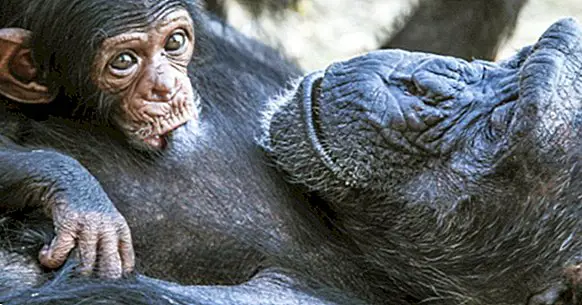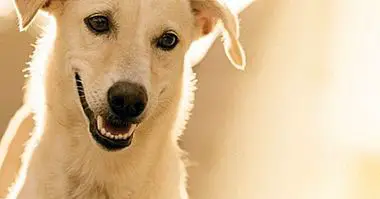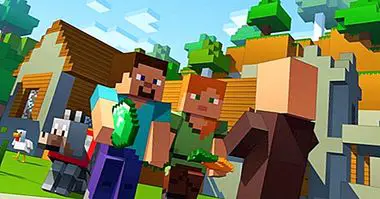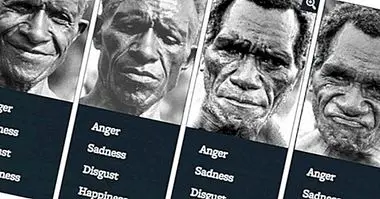Michael Tomasello's theory: what makes us human?
In comparison with other animals, humans have built highly developed societies in terms of culture and technology. Historically, this has been attributed to a hierarchical superiority of humans on a supposedly evolutionary scale. For example, theories that state that the human brain is greater or simply superior are still in vogue today.
The investigations and the theory of Michael Tomasello they have been the most relevant recent contributions of comparative psychology to a classic question: what makes us human? That is, what differentiates us from other animals?
The theory of Michael Tomasello
Michael Tomasello, co-director of the Max Planck Institute for Evolutionary Anthropology, is a psychologist who investigates social cognition, that is, the way people process social information, social learning and communication.
Tomasello, whose perspective is placed in constructivism, states that humans differ from other species by our ability to collaborate in activities when we share goals . Tomasello calls this "shared intentionality."
- Related article: What is constructivism in Psychology?
Comparative studies with children and chimpanzees
In recent years Tomasello has studied mainly communication and shared intentionality. For it has compared the cognitive processes of children and chimpanzees , since they are the closest animal to humans.
In his experiments, Tomasello analyzed, among other aspects, the way in which children and chimpanzees share the rewards after carrying out a collaborative effort. For this, he compared the results obtained in collaborative tasks carried out by pairs of children or chimpanzees.
Although the studied chimpanzees were able to work as a team, after achieving the reward, food in this case, the most dominant of the two remained the prize in full. This tendency toward individualism causes non-human primates to have difficulties maintaining cooperative relationships in a sustained manner over time.
Instead the children distributed the reward in a more or less fair way after collaborating to obtain it. Although before discussing or trying to stay all the food, there was a kind of negotiation that ended, normally, with each child remaining half the prize.
In another of the experiments one of the members of the couple obtained the prize before the other. In the case of children, the first to obtain the reward continued to collaborate with the other until he also got his. On the contrary, the chimpanzee who obtained the food in the first place was unconcerned about his partner.
- Related article: "Comparative psychology: the animal part of psychology"
Differences between human and chimpanzee societies
Tomasello affirms from his experiments and observations that the societies formed by the great apes are much more individualistic than those of humans. It attributes this to the greater capacity of people, even when they are very young, for collaboration and to attribute intentions to others.
This ability to "Read the mind", or imagine the emotions and thoughts of others and understand that they may be different from their own, is known as "theory of mind." It is considered that great apes and other animals, such as crows or parrots, also possess this ability, but it is much less developed than in humans.
Tomasello says that great apes usually use the theory of mind to compete, for example to get sexual partners. They can also carry out altruistic or prosocial behaviors to help other individuals, but they usually do so only if there is no competition for the resources and the effort is minimal.
According to Tomasello, the groups of Chimpanzees rely heavily on dominance and individual activity ; For example, the collection of food or the care of the young are carried out by a single individual.
In contrast, among humans, relationships and social hierarchies are not determined only by selfishness and domination, but collaboration is more important. Tomasello states that non-cooperative people (parasites or "free riders") tend to be left out in cooperative activities.
The development of culture and morality
Another fundamental difference between us and the rest of primates is that we humans create social norms and institutions . According to Tomasello, these are a consequence of our ability to exchange information with other members of our group and to transmit the culture from generation to generation, which allows us to progressively make our societies more complex.
The degree of collaboration and interdependence also increases as societies develop. Human groups tend to get bigger and bigger: in a few thousand years, a very short period of time in the context of evolution, we have gone from being part of small tribes of hunters and gatherers to the current globalized world. This progress would have been unthinkable without the development of language and the cumulative progress of culture and technology.
According to Tomasello, children are instinctively cooperative but as they grow and are influenced by the culture that surrounds them, they learn to discriminate with whom they collaborate, mainly so as not to be exploited by the "free riders".
Human children internalize the norms constructed by their society to such an extent that they self-organize the responsibility of making others comply with them, even if otherwise it does not harm anyone. Tomasello states that human culture promotes that we do things "in the right way", that is, as most of the group of which we are a part do, and that those who do not meet social standards get a bad reputation and they are seen with suspicion.
- Related article: "What is morality? Discovering the development of ethics in childhood"
Human intelligence and animal intelligences
Historically it has been considered that human intelligence is quantitatively superior to the animal because our brain is more developed. However, according to the studies of Tomasello children outnumber chimpanzees in social intelligence but they have a level of physical intelligence, for example spatial or corporal, equivalent to these.
Tomasello and other authors have proven that great apes have cognitive abilities that until recently we would have attributed exclusively to humans. Among other things, they know that objects still exist even if they disappear from their sight (the permanence of a Piagetian object) and they can differentiate quantities mentally.
The chimpanzee pups are also capable of communicative gestures, but their variety and complexity are scarce. Another ape, the gorilla Koko has been trained in the use of sign language by Francine Patterson. Koko has even managed to create complex concepts by combining several words. There are also examples that non-human animals can transmit the culture from generation to generation: for example, in a group of chimpanzees in Ivory Coast young people are taught to use stones as hammers to open nuts.
Cooperation makes us human
According to the constructivist Tomasello, people learn language through cumulative cultural transmission, which has allowed our verbal communication to be very complex. further our body is perfectly adapted to the language , from the phonatory organs to specific areas of the brain. Just as marine animals have adapted to an aquatic context, we have done so in a social context.
Humans need culture to develop. Without social interaction or language not only would we not reach our full potential as a species, but our cognitive and social abilities would be very similar to those of other primates. Wild children, like Victor de Aveyron, serve as an example of this: without contact with other people, humans lose what makes us special .
- Related article: "What makes the human brain so special?"
Bibliographic references:
- Herrmann, E .; Call, J .; Hernández-Lloreda, M. V .; Hare, B. & Tomasello, M. (2007). "Humans Have Evolved Specialized Skills of Social Cognition: The Cultural Intelligence Hypothesis". Science, 317(5843): 1360–1366.
- Tomasello, M .; Carpenter, M .; Call, J .; Behne, T. & Moll, H. (2005). "Understanding and sharing intentions: The origins of cultural cognition". Behavioral and Brain Sciences, 28: 675-735.
- Warneken, F .; Hare, B .; Melis, A. P .; Hanus, D. & Tomasello, M. (2007). "Spontaneous Altruism by Chimpanzees and Young Children". PLoS Biology, 5: 1414–1420.



















